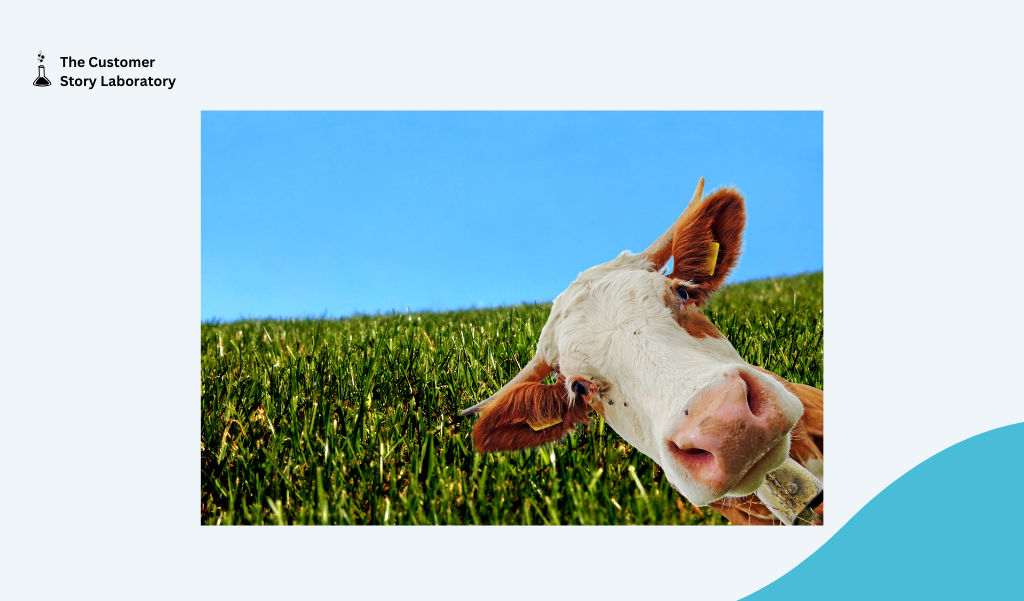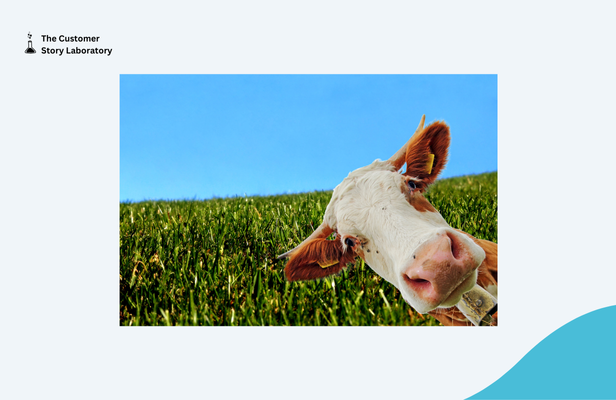
Next time you’re in a group conversation, observe how people take turns speaking.
You’ll notice that people are pretty good at figuring out when one person has finished their thought and it’s someone else’s turn to speak.
But it’s not all on listeners to decide when a speaker has finished his thought.
The speaker must give signals to his listeners.
The scientific term for these signals is “discourse marker.” They’re the ‘um’, ‘er’, ‘uh’, and ‘you know’ your speech teacher told you to get rid of.
According to Josef Fruehwald of the University of Edinburgh, these discourse markers are a signal to your listener that you’re planning to say something.
So why should you, as a writer, care?
Because you can use this natural convention of conversation as a copywriting formula to keep readers hanging on your every word.
But before we figure out how, let’s be clear about something.
I’m not advocating for ummm… adding uhh… these, you know… pause fillers to your writing.
That would be ridiculously annoying.
Part One of the Formula: Nick Usborne and “Pause Fillers”
Nick Usborne demonstrated the copywriting equivalent of discourse markers. He calls them “pause fillers,” words and phrases that let the reader know we have more to say. For example:
But wait! There’s more.
Better still…
That’s why…
With these phrases, you get the effect of discourse markers—you signal to the reader that you’re not finished—without being annoying.
But it gets better…
Look at this famous headline:
They Laughed When I Sat Down at the Piano. But When I Started to play!~
Written by advertising legend John Caples, this headline taps into what academic George Lowenstein termed: “the information gap theory of curiosity.”
Maybe you’ve heard of the information gap theory of curiosity. Really, it’s a concept that all writers, from the age of Shakespeare to Stephen King, leverage when they use a cliffhanger.
Novelists often do it at the end of a chapter. TV writers do it at the end of episodes. Even comedians do it when they set up a joke.
But it’s less obvious how content or copywriters do this.
Part Two of the Formula: Demian Farnworth and the Internal Cliffhanger
Farnworth wrote an article for Copyblogger about what he calls the “internal cliffhanger.”
The basics of it is this:
Even after you’ve hooked a reader with your headline, your job is far from over. Every sentence is a battle to keep that reader reading.
How does Farnworth suggest you fight that battle?
With a cliffhanger.
But not the kind that keeps you glued to your couch, insisting you’re going to watch “just one more episode” until it’s seven at night and you still haven’t gone outside.
Rather it’s the kind of cliffhanger that keeps your reader on the edge of every sentence: the internal cliffhanger.
With the internal cliffhanger, you intentionally leave out information in one sentence and save it for a later sentence or sentences.
It’s just like making your headline a cliffhanger.
With a headline, you leave out information which the reader can only get by clicking on your article. With an internal cliffhanger, you leave out information that the reader can only get by continuing to read.
The Copywriting Formula: Internal Cliffhanger + Pause Filler = Hooked Reader
So we understand the internal cliffhanger and the pause filler. That’s great.
But the real power comes when you combine these two ideas into one copywriting formula.
Think about it:
On the web, people move quickly. If they think they’ve gotten all of what your post or article has to offer, they’re gone. And the moment you transition from one thought to the next is the perfect moment for your reader to stop reading.
Those are the critical moments you need to keep them hooked.
And an “umm” isn’t going to do it.
You need an internal cliffhanger. And you need to place it right where a pause filler would otherwise go if you were speaking.
So how do you do it?
Construct your sentence such that the edge of your cliffhanger falls at each transition in your thinking.
I’ll show you what I mean.
In the example of this technique below, everything in bold is both a pause filler and an internal cliffhanger. Everything else is me advancing my idea.
It’s a fantastic, effective copywriting technique… the idea that writers can leverage the conventions of conversation to hold their reader’s attention.
But it gets better.
Look at this headline:
They Laughed When I Sat Down at the Piano. But When I started to play!~
Written by advertising legend, John Caples, this headline shows us how to write a headline that taps into what academic George Lowenstein called: “the information gap theory of curiosity.”
A Copywriting Technique that Anyone Can Learn
As a writer, you’ve been preached to about the benefits of writing the way you speak. And those preachers are (sort of) right.
But “write like you speak” is vague and misleading instruction…
And if you don’t speak well, you shouldn’t write like that.
Forget that advice and use this method to write like you would speak, if you were a good speaker. That’s what good conversational writing is about.
The best part of this copywriting technique is that anyone who has ever spoken implicitly understands the concept.
You just need to analyze the flow of your written ideas and understand when those ideas change direction.
Then, once you can tell where your ideas change direction, you know where to insert your internal cliffhangers.


